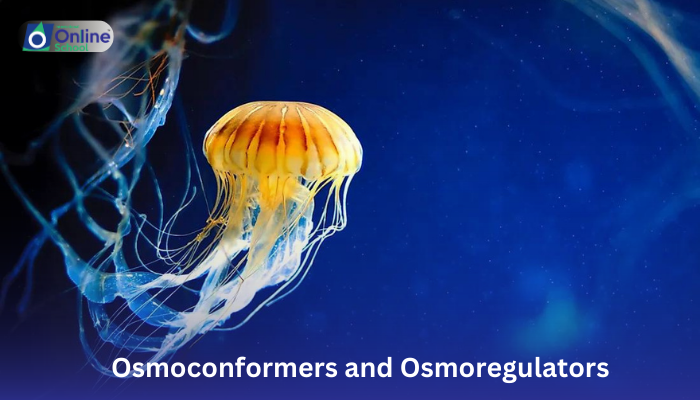
Learning Outcomes
By the end of this lesson, students will be able to:
i. Define the terms osmoconformers and osmoregulators.
ii. Explain the concept of osmosis and its role in regulating water and solute balance in living organisms.
iii. Differentiate between the strategies employed by osmoconformers and osmoregulators to maintain internal osmotic balance in different environments.
iv. Provide examples of osmoconformers and osmoregulators from various ecosystems.
Introduction
Living organisms are constantly exposed to changes in their external environment, including variations in salinity and water availability. These fluctuations can significantly impact the osmotic pressure of the surrounding environment, which in turn affects the movement of water and solutes across the cell membrane. Organisms have evolved two primary strategies to cope with these osmotic challenges: osmoconformity and osmoregulation.
i. The Osmoconformers' Approach: Matching the Environment
Osmoconformers are organisms that maintain an internal osmotic pressure that matches the osmotic pressure of their external environment. This means that their body fluids have the same solute concentration as the surrounding water. This strategy is most commonly found in marine invertebrates, such as sea anemones and jellyfish, which live in environments with relatively constant salinity. By matching their internal osmotic pressure to the surrounding seawater, osmoconformers avoid the movement of water and solutes across their cell membranes, conserving energy and maintaining cellular integrity.
ii. The Osmoregulators' Strategy: Active Regulation
Osmoregulators, in contrast, actively regulate their internal osmotic pressure, maintaining a stable internal environment despite changes in the external osmotic pressure. This strategy allows osmoregulators to thrive in diverse environments, including freshwater, saltwater, and terrestrial habitats. Osmoregulators employ various mechanisms to regulate their internal osmotic balance, including:
Active transport: Osmoregulators use energy to transport solutes across cell membranes, either into or out of their bodies, to maintain the desired solute concentration.
Passive transport: Osmoregulators utilize passive diffusion and osmosis to move water and solutes across cell membranes.
Behavioral adaptations: Osmoregulators may exhibit behavioral adaptations to conserve water or regulate salt intake, such as seeking shade in hot environments to prevent water loss or seeking out salt sources in freshwater environments.
iii. Examples of Osmoconformers and Osmoregulators
Osmoconformers:
Marine invertebrates: Sea anemones, jellyfish, sea stars
Freshwater protists: Amoebas, paramecia
Osmoregulators:
Marine fish: Sharks, bony fish
Freshwater fish: Salmon, trout
Terrestrial mammals: Humans, camels
The strategies of osmoconformity and osmoregulation allow organisms to adapt to a wide range of osmotic conditions, ensuring the maintenance of cellular functions and overall survival. Osmoconformers thrive in environments with relatively stable osmotic pressure, while osmoregulators exhibit remarkable adaptability, regulating their internal osmotic balance despite significant fluctuations in their external environment. Understanding the principles of osmoregulation and the diverse strategies employed by organisms highlights the remarkable resilience and adaptability of life.